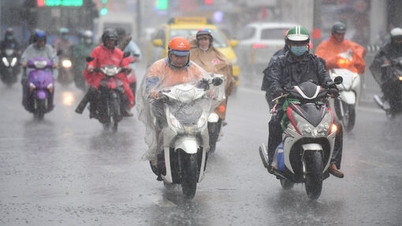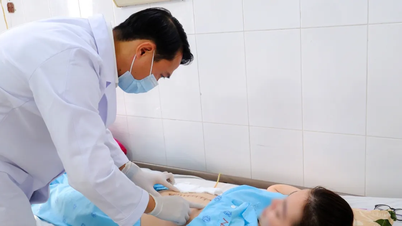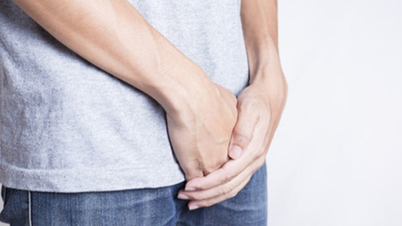They can also occur at other times without any particularly strong trigger, according to Medical Daily .

related news
10 signs you have a vitamin deficiency “Cold hands and feet are common,” says Natalie Evans, a vascular specialist at the Cleveland Clinic. “Generally, cold hands and feet in healthy young people are nothing to worry about. But if your hands and feet are getting cold even with a moderate drop in temperature, you may have Raynaud’s syndrome. This condition is accompanied by changes in skin color, such as turning white, blue, or red.
However, it is important to get checked and diagnosed. Your doctor may prescribe it if you are experiencing bothersome symptoms such as hard skin or sores (on the fingertips or toes).
People with Raynaud's usually have no problems as long as they protect themselves from the cold by wearing gloves and socks. Without skin protection, the body can become frostbitten.

related news
Use loudspeaker to call sick children playing in the yard to come up for... Social Security check “Another thing that can happen is muscle spasms,” says Melisa Lai Becker, Head of Emergency Medicine at Cambridge Health Alliance (UK).
In other cases, cold hands or feet can be a symptom of an underactive thyroid, also known as hypothyroidism.
In older adults, cold feet can be a sign of peripheral artery disease (PAD), a condition that causes blockages or narrowing of the arteries. PAD can also present with other symptoms such as cramps and unusual changes in the fingernails. PAD can also affect people with diabetes or a history of smoking, according to Medical Daily .
Generally, cold body parts are nothing to worry about. Some people may simply be prone to cold hands and feet without any underlying cause.
If you want to relieve symptoms without medication, you can move more to improve circulation in your hands and feet, and keep your body warm with warm water or a heating pad.
Source: https://thanhnien.vn/tay-chan-lanh-la-dau-hieu-cua-benh-gi-185806547.htm



![[Photo] Hanoi morning of October 1: Prolonged flooding, people wade to work](https://vphoto.vietnam.vn/thumb/1200x675/vietnam/resource/IMAGE/2025/10/1/189be28938e3493fa26b2938efa2059e)































![[Photo] The 1st Congress of Phu Tho Provincial Party Committee, term 2025-2030](https://vphoto.vietnam.vn/thumb/1200x675/vietnam/resource/IMAGE/2025/9/30/1507da06216649bba8a1ce6251816820)
![[Photo] President Luong Cuong receives President of the Cuban National Assembly Esteban Lazo Hernandez](https://vphoto.vietnam.vn/thumb/1200x675/vietnam/resource/IMAGE/2025/9/30/4d38932911c24f6ea1936252bd5427fa)
![[Photo] Panorama of the cable-stayed bridge, the final bottleneck of the Ben Luc-Long Thanh expressway](https://vphoto.vietnam.vn/thumb/1200x675/vietnam/resource/IMAGE/2025/9/30/391fdf21025541d6b2f092e49a17243f)


























































Comment (0)